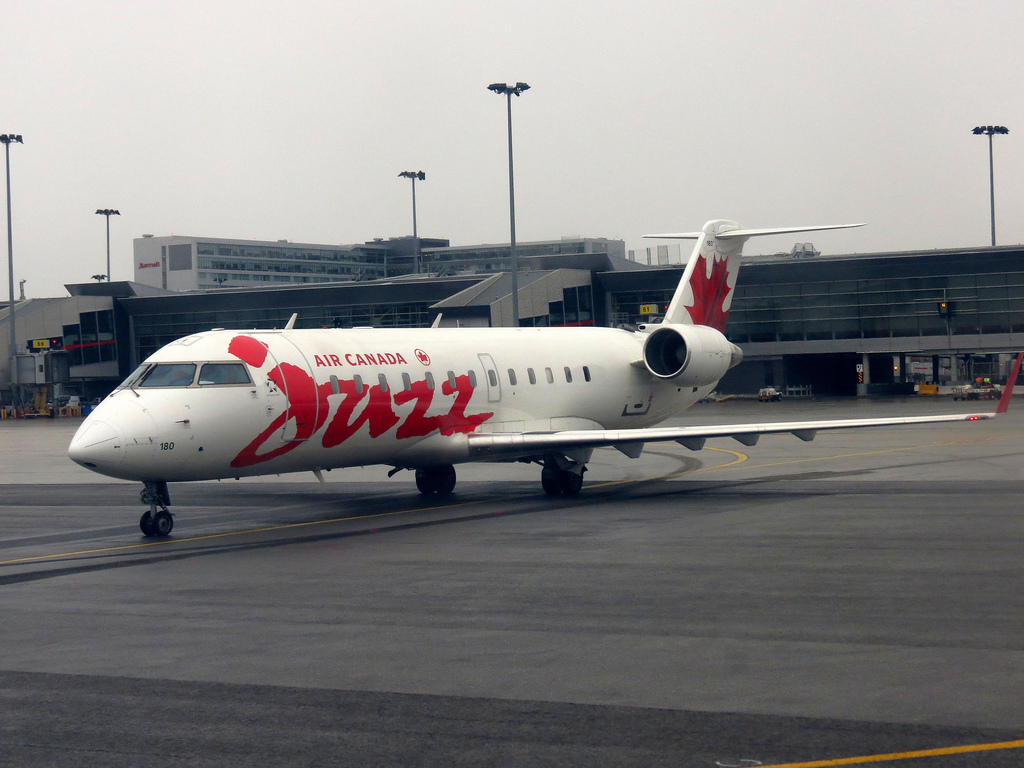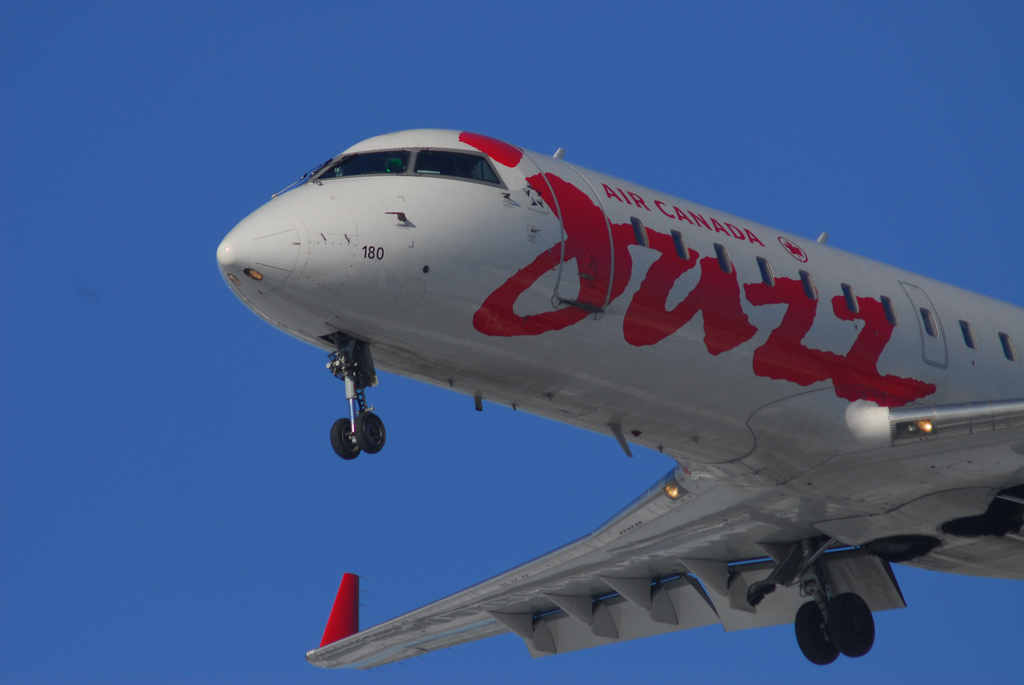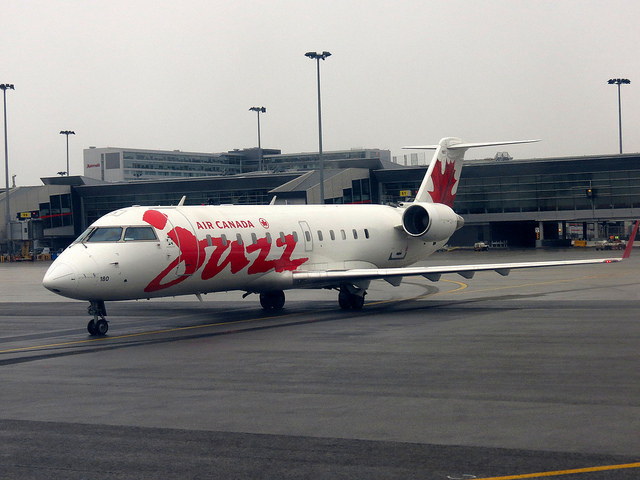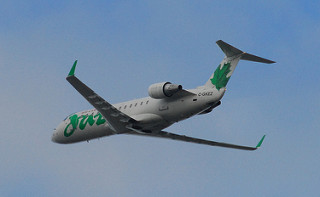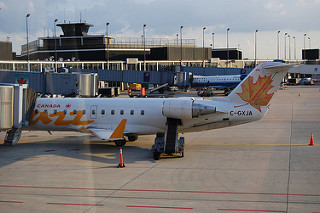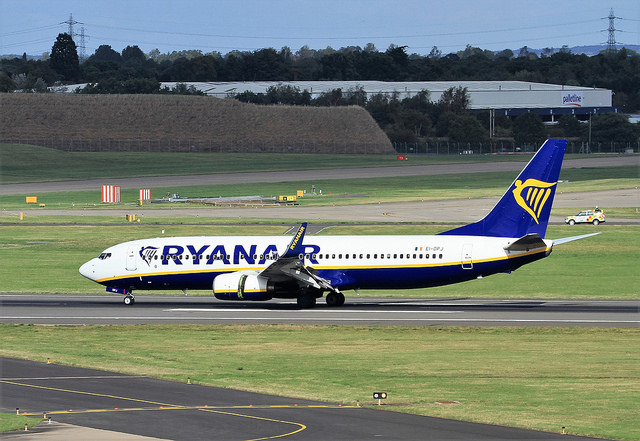Georgian CRJ2 at Toronto on Aug 9th 2019, rejected takeoff due to no takeoff clearance and crossing aircraft
Last Update: January 15, 2021 / 15:43:15 GMT/Zulu time
Incident Facts
Date of incident
Aug 9, 2019
Classification
Report
Cause
Rejected takeoff
Airline
Air Georgian
Flight number
ZX-7339
Departure
Toronto, Canada
Destination
Columbus, United States
Aircraft Registration
C-GKEJ
Aircraft Type
Canadair Corporate Jetliner
ICAO Type Designator
CRJ2
An Air Canada Boeing 777-300, registration CFIUR performing flight AC-883 from Copenhagen (Denmark) to Toronto,ON (Canada) with 378 passengers and 12 crew, had landed on runway 33L and was cleared to cross runway 33R at taxiway H without delay.
While the Boeing 777 began moving across the runway the crew of the CRJ began their takeoff roll without clearance. When the aircraft went over the elevated hump of the runway, the crew saw the Boeing 777 crossing the runway about 5400 feet ahead and rejected takeoff reaching a maximum speed of 99 knots over ground. The crew slowed safely and vacated the runway via taxiway B2.
The CRJ returned to the holding point runway 33R and departed about 9 minutes later.
The crew of the Boeing remained unaware of the conflict.
The Canadian TSB released their final report concluding the probable causes of the occurrence were:
- The number of pre-departure tasks the flight crew was required to complete within a short amount of time increased their workload.
- The first officer’s workload was further elevated as she focused on the heading and altitude change of the standard instrument departure amendment, which, at the time, she believed was most important in the line-up instruction.
- When the first officer received and read back the line-up instruction with the standard instrument departure amendment she had misinterpreted that air traffic control communication as a clearance for takeoff.
- The increased workload, the expectation to receive a take-off clearance without delay, and the misinterpretation of the line-up instructions, led the crew to initiate the take-off roll without a take-off clearance.
- The fuselage of the Boeing 777 would not have been visible to the CRJ 200 crew at the start of the take-off roll because of the grade profile of Runway 33R; therefore, the crew had no visual indication that it was unsafe to initiate the take-off roll on Runway 33R.
Findings as to risk These are conditions, unsafe acts or safety deficiencies that were found not to be a factor in this occurrence but could have adverse consequences in future occurrences.
- Backward-rotating shift schedules cause circadian rhythm desynchronization, which increases the risk of fatigue in crew members who do not receive sufficient time off to adapt their sleep-wake pattern when working these schedules.
- If airlines do not inform crew members of the risk of fatigue due to the direction of shift schedule rotation, there is an increased risk that crew members will operate an aircraft while fatigued.
- If cockpit voice recorders that have a reduced recording capacity remain in service, there is an increased risk that data relevant to an occurrence will not be available to an investigation, precluding the identification and communication of safety deficiencies to advance transportation safety.
Other findings These items could enhance safety, resolve an issue of controversy, or provide a data point for future safety studies.
- Although the Manual of Air Traffic Services requires an abort-takeoff instruction to be issued when the stage 2 alert is triggered, the tower controller chose not to issue an abort-takeoff instruction, but rather issued a take-off clearance because he assessed that there was no risk of collision.
The TSB described the sequence of events:
At 1242:38, the FO of the CRJ 200 had finished the taxi checklist and was continuing with the line-up checklist, when the tower controller instructed the flight crew to line up on Runway 33R. With this instruction, the tower controller included an amendment to the altitude and heading for the standard instrument departure (SID) clearance to ensure adequate separation with the DHC-8 that had just departed.
After reading back the instructions correctly, the FO changed the altitude selector and then returned to the next item on the line-up checklist. After hearing the correct readback from the FO of the CRJ 200, the tower controller, who was also actively controlling arrivals on Runway 33L, turned to observe another de Havilland DHC-8 aircraft that was on approach for landing on Runway 33L.
As the CRJ 200 taxied to line up on Runway 33R, the Boeing 777 was approaching the Runway 33R hold short line on Taxiway H. At 1243:16, the north ground controller, who had coordinated runway activity with the tower controller, instructed the flight crew of the Boeing 777 to cross Runway 33R without delay.
As the flight crew of the CRJ 200 lined up in position on Runway 33R and the FO finished the line-up checklist, the captain asked the FO if they had received a take-off clearance. The FO stated that they had.
At 1243:30, as the Boeing 777 crossed the runway holding position for Runway 33R, the crew of the CRJ 200 began the take-off roll. The crew had not received take-off clearance from the tower controller.
The CRJ 200 began to accelerate. As the aircraft approached the peak of the elevated hump in the runway, the captain saw the Boeing 777 approximately 5400 feet ahead and immediately rejected the takeoff. At that time, the flight crew realized that they had likely not received a take-off clearance.
At 1243:46, the runway incursion monitoring and conflict alert system (RIMCAS)4 issued a visual alert and audible alarm in the tower. The tower controller, who had been focused on the arriving DHC-8 aircraft on Runway 33L, instantly shifted his attention to the conflict on Runway 33R.
At 1243:53, the tower controller quickly assessed the situation, determined that there was no risk of collision, and immediately issued a take-off clearance to the crew of the CRJ 200, who had already initiated a rejected takeoff. The crew of the CRJ 200 made a radio call to inform the tower controller that they were rejecting the takeoff. The tower controller then instructed the CRJ 200 to exit Runway 33R on Taxiway B2.
The CRJ 200 slowed and exited the runway via Taxiway B2.5 The CRJ 200 had reached a maximum groundspeed of 99 knots during the take-off run.
After clearing the runway and stopping briefly on Taxiway B2 to complete the applicable checklist items, the flight crew of the CRJ 200 received taxi instructions to reposition the aircraft and prepare for another departure on Runway 33R. The CRJ 200 departed CYYZ at 1252. After landing at KCMH, the captain and FO both submitted an Air Safety Report6 regarding the rejected takeoff at CYYZ, in accordance with the Air Georgian Company Operations Manual.
The flight crew of the Boeing 777 was unaware of the conflict because they had been monitoring the north ground frequency.
The TSB analysed the actions of the crew:
During the short taxi distance, the flight crew had to complete a number of pre-departure tasks, such as manoeuvring the aircraft, completing checklist items, communicating with ATC, and monitoring the area around the aircraft, including keeping watch for other aircraft and their movements. In preparation for departure, the captain’s attention was focused on safely manoeuvring the aircraft, while the first officer’s (FO’s) attention was focused on completing the checklists and communicating with ATC.
During normal operations, without any time constraints, the taxi and line-up checklists could take up to 6 minutes to complete. Due to the lack of CVR data, the actual time it took the flight crew to complete the checklist items could not be determined. However, the elapsed time from when the aircraft started to taxi from the gate area to the time it started the take-off roll on Runway 33R was 3 minutes and 22 seconds. Given that the flight crew completed the required checklists and also responded to ATC instructions, the number of pre-departure tasks the flight crew was required to complete within a short amount of time increased their workload.
As the CRJ 200 approached Runway 33R, the flight crew was expecting to receive immediate authorization to take off. Although the FO read back the ATC instructions correctly, she had limited attentional resources to evaluate the content of the instructions as her focus was on completing the line-up checklist. The FO’s workload was further elevated as she focused on the heading and altitude change of the standard instrument departure (SID) amendment, which, at the time, she believed was most important in the line-up instruction.
The SID amendment reinforced the FO’s expectation that they would soon receive authorization to take off. It is important to note that the FO was accustomed to receiving a SID amendment followed by a take-off clearance. In this occurrence, when the FO received and read back the line-up instruction with the SID amendment, she had misinterpreted that ATC communication as a clearance for takeoff. During this time, the captain was focused on another aircraft while manoeuvring the aircraft to position. Therefore, he had reduced attentional resources to attend to ATC instructions and clearances and supervise the FO, and, as a result, did not focus on the ATC instruction.
When the CRJ 200 entered Runway 33R, a de Havilland DHC-8 aircraft had departed and was likely no longer visible to the crew. There was no other aircraft on the runway directly in front of them.
When the captain asked the FO if they had received clearance to take off, the FO, who had misinterpreted the tower controller line-up and SID amendment instructions as clearance to take off, replied that they had received take-off clearance. This interpretation matched the crew’s mental model of the situation that they would be taking off shortly after lining up on Runway 33R.
The increased workload, the expectation to receive a take-off clearance without delay, and the misinterpretation of the line-up instructions led the crew to initiate the take-off roll without a take-off clearance.
Based on TSB calculations, the fuselage of the Boeing 777 would not have been visible to the CRJ 200 crew at the start of the take-off roll because of the grade profile of Runway 33R; therefore, the crew had no visual indication that it was unsafe to initiate the take-off roll on Runway 33R. The flight crew would have only been able to see the top portion of the Boeing 777’s vertical stabilizer at Taxiway H, over 8900 feet away. The distance between the CRJ 200 and the Boeing 777, in addition to the speed at which the Boeing 777 was taxiing and the surrounding features on the horizon, would have made it difficult for the flight crew to identify the top portion of the vertical stabilizer.
The crew only detected the Boeing 777 after reaching the crest of the hump of Runway 33R. The captain immediately rejected the takeoff. At that time, the flight crew realized that they had likely not received a take-off clearance.
The TSB analysed the actions by the Tower Controller:
On the day of the occurrence, the tower controller was working a combined north/south position, and was controlling both departing aircraft on Runway 33R and landing aircraft on Runway 33L. Due to the physical location of the tower, the tower controller cannot observe the threshold of both Runway 33L and Runway 33R at the same time. In addition, while the tower controller is observing aircraft at either threshold, the controller cannot monitor displays on the workstation and must rely instead on audible alarms to alert them to runway conflicts. Because there are 8 crossings on Runway 33R, which increases the risk of incursion, the controller must also be vigilant for traffic crossing the active runway. The tower controller was experiencing a moderate level of workload at the time of the occurrence due to the challenge in monitoring both Runway 33 thresholds and workstation displays, all at the same time.
The tower controller managed the workload by occasionally implementing short delays between line-up and take-off clearances for departing aircraft. This short delay would give the tower controller time to monitor landing aircraft and to coordinate with the ground controller to ensure that aircraft that have to cross Runway 33R do so safely.
The tower controller had planned for a short delay after issuing the line-up instruction to the CRJ 200. The tower controller intended to provide the take-off clearance as soon as his attention was no longer required for the landing aircraft on Runway 33L, and after confirming that the Boeing 777 was clear of Runway 33R. Although NAV CANADA’s Manual of Air Traffic Services (MATS) requires a controller to instruct an aircraft to “wait” if a delay is expected following a line-up instruction, the tower controller did not believe that the delay would be long and believed that the CRJ 200 crew was aware of the preceding departure; therefore, he did not issue an instruction to “wait”.
After the tower controller provided the CRJ 200 flight crew with line-up instructions, and heard the correct readback, he expected the flight crew to comply with the instruction. He then turned to focus his attention on the aircraft that was landing on Runway 33L and, therefore, could not monitor the threshold of Runway 33R or the advanced surface movement guidance and control system (A-SMGCS) display to confirm the position of the CRJ 200 or the Boeing 777 crossing Runway 33R.
The CRJ 200 began the take-off roll as the Boeing 777 crossed the runway holding position for Runway 33R. Shortly after, the tower controller received a stage 2 audible alarm from the runway incursion monitoring and conflict alert system (RIMCAS) and his attention was drawn back to Runway 33R. He observed the CRJ 200 accelerating along the runway and then noticed the Boeing 777 clearing the runway. Given the speed and position of both aircraft, he quickly assessed that there was no risk of collision and issued a take-off clearance to the CRJ 200. At the same time, the flight crew of the CRJ 200 observed the Boeing 777 still crossing the runway and initiated a rejected takeoff. The flight crew of the CRJ 200 heard the ATC take-off clearance, but informed the controller that they were rejecting the takeoff.
The guidance in the MATS states that the controller must cancel the take-off clearance or issue an instruction to abort takeoff when a RIMCAS stage 2 alert is activated. The MATS also states that “[a] controller-initiated aborted takeoff is an extreme measure used only where no clear alternative exists.”53 In this occurrence, although the MATS requires an abort-takeoff instruction to be issued when the stage 2 alert is triggered, the tower controller chose not to issue an abort-takeoff instruction, but rather issued a take-off clearance because he assessed that there was no risk of collision.
With respect to the CVR the TSB analysed:
The cockpit voice recorder (CVR) installed on the CRJ 200 had a 30-minute recording capacity and was certified for use in Canada according to existing Canadian regulations. The CRJ 200 eventually departed for its scheduled flight to John Glenn Columbus International
54 K. Klein and H. Wegmann, “Significance of circadian rhythms in aerospace operations”, NATO AGARD-AG-247 (Neuilly sur Seine, France: NATO AGARD, 1980).
Airport (KCMH), Ohio, United States (U.S.). However, Part 129 of the U.S. Federal Aviation Regulations (FAR) requires foreign air operators to conduct operations in accordance with the International Civil Aviation Organization’s (ICAO’s) Annex 6 to the Convention on International Civil Aviation. Annex 6 specifically states the requirement for all CVRs to have a recording capacity of at least 2 hours.
The use of CVRs with 30-minute recording capacity is no longer permitted by international standards. Therefore, any Canadian aircraft currently equipped with a CVR with a 30- minute recording capacity, such as the occurrence aircraft, that is operating outside Canada, does not comply with the U.S. and ICAO requirements.
ICAO standards regarding CVRs were amended in 2010 and stated that, as of January 2016, all CVRs must be capable of retaining the information recorded during at least the last 2 hours of their operation. In May 2019, Transport Canada published amendments to the Canadian Aviation Regulations that require CVRs to be capable of recording at least 2 hours; however, these requirements will only become effective on 29 May 2023. This implementation date will allow the continued use of 30-minute CVRs for more than 7 years beyond the ICAO deadline of January 2016.
Incident Facts
Date of incident
Aug 9, 2019
Classification
Report
Cause
Rejected takeoff
Airline
Air Georgian
Flight number
ZX-7339
Departure
Toronto, Canada
Destination
Columbus, United States
Aircraft Registration
C-GKEJ
Aircraft Type
Canadair Corporate Jetliner
ICAO Type Designator
CRJ2
This article is published under license from Avherald.com. © of text by Avherald.com.
Article source
You can read 2 more free articles without a subscription.
Subscribe now and continue reading without any limits!
Read unlimited articles and receive our daily update briefing. Gain better insights into what is happening in commercial aviation safety.
Send tip
Support AeroInside by sending a small tip amount.
Related articles
Georgian CRJ2 near Toronto on Mar 4th 2017, hydraulic failure
An Air Georgian Canadair CRJ-200, registration C-GKEJ performing flight ZX-7264 from Toronto,ON (Canada) to Pittsburgh,PA (USA), was climbing out of…
Georgian CRJ2 at Toronto on Jul 5th 2019, rejected takeoff due to engine duct warning
An Air Georgian Canadair CRJ-200, registration C-GZJA performing flight ZX-7378 from Toronto,ON (Canada) to Providence,RI (USA) with 43 passengers…
Georgian CRJ1 near Toronto on Jan 11th 2019, unreliable airspeeds and altitudes
An Air Georgian Canadair CRJ-100, registration C-GKFR performing flight ZX-7272 from Memphis,TN (USA) to Toronto,ON (Canada), was descending towards…
Georgian CRJ2 enroute on Mar 4th 2018, odour in cockpit, smoke in cabin
An Air Georgian Canadair CRJ-200 on behalf of Air Canada, registration C-GKEZ performing flight ZX-7388/AC-7388 from Kansas City,MO (USA) to…
Georgian CRJ1 at Toronto on Dec 26th 2017, trim failure in initial climb, control trouble
An Air Georgian Canadair CRJ-100, registration C-FWRR performing flight ZX-7341 from Toronto,ON (Canada) to Columbus,OH (USA) with 30 passengers and…
Georgian CRJ2 at Raleigh/Durham and Toronto on Sep 14th 2017, flapless landing
An Air Georgian Canadair CRJ-200, registration C-GXJA performing flight ZX-7318 from Raleigh/Durham,NC (USA) to Toronto,ON (Canada) with 49…
Newest articles
Buffalo B732 at Goose Lake and Yellowknife on Oct 20th 2025, uncommanded nose gear extension and collapse
A Buffalo Airways Boeing 737-200, registration C-GTVO performing flight J0-202 from Goose Lake,NU to Yellowknife,NT (Canada) with 3 crew on board,…
Ryanair B738 at Cluj on Nov 3rd 2025, first officer incapacitated
A Ryanair Boeing 737-800, registration EI-DPJ performing flight FR-2682 from Milan Bergamo (Italy) to Cluj (Romania), was descending towards Cluj…
Subscribe today
Are you researching aviation incidents? Get access to AeroInside Insights, unlimited read access and receive the daily newsletter.
Pick your plan and subscribePartner

ELITE Simulation Solutions is a leading global provider of Flight Simulation Training Devices, IFR training software as well as flight controls and related services. Find out more.
SafetyScan Pro provides streamlined access to thousands of aviation accident reports. Tailored for your safety management efforts. Book your demo today
AeroInside Blog
Popular aircraft
Airbus A320Boeing 737-800
Boeing 737-800 MAX
Popular airlines
American AirlinesUnited
Delta
Air Canada
Lufthansa
British Airways
